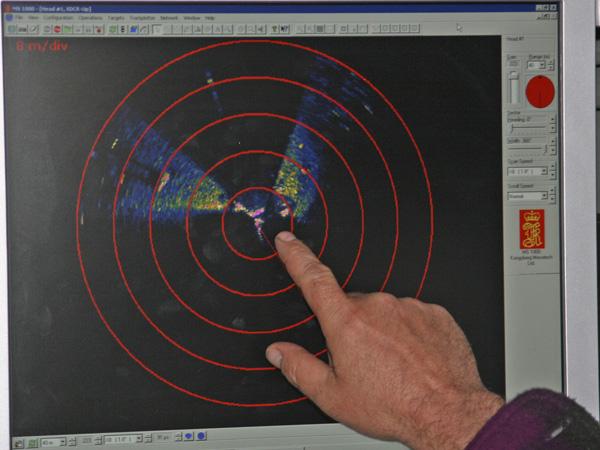Japan is deploying a groundbreaking network of seafloor monitors designed to shed new light on the elusive phenomenon of “slow slip” earthquakes-gradual tremors that can quietly build stress along fault lines before triggering devastating major quakes. By capturing detailed, real-time data from beneath the ocean floor, researchers hope to unlock the mechanisms that cause these slow-moving seismic events to escalate into powerful earthquakes, offering the promise of improved early warning systems and enhanced earthquake preparedness in one of the world’s most seismically active regions.
Japan Deploys Advanced Seafloor Monitors to Track Slow Slip Earthquake Activity
Japan has recently deployed a fleet of cutting-edge seafloor monitors designed to capture real-time data on slow slip earthquakes-subtle tremors that shift portions of tectonic plates over days or weeks instead of seconds. These monitors utilize advanced pressure sensors and seismometers anchored on the ocean floor, allowing scientists to detect minute movements along fault lines previously undetectable by land-based instruments. By monitoring these slow slips more accurately, researchers aim to unlock patterns that could link them to the onset of larger, destructive earthquakes, potentially transforming early warning capabilities in the seismically active region.
Key features of the new system include:
- High-sensitivity strain gauges for capturing gradual plate deformations
- Real-time data transmission buoy systems enabling continuous monitoring
- Multi-node sensor arrays strategically placed along critical subduction zones
- Integration with Japan Meteorological Agency’s earthquake early warning infrastructure
| Feature | Capability |
|---|---|
| Pressure Sensors | Detect subtle seafloor deformations |
| Seismometers | Record micro-tremors and gradual slips |
| Buoy Data Link | Ensures 24/7 data relay to land stations |
| Power Supply | Long-lasting batteries with solar recharging |
Uncovering the Mechanisms Behind Slow Slip Events and Their Escalation into Major Earthquakes
Japan’s pioneering deployment of advanced seafloor monitoring networks marks a significant leap in seismic research, providing unprecedented insight into the subtle and complex processes of slow slip events (SSEs). These gradual, fault-slipping phenomena can unfold over days to months, silently transferring strain but often escaping detection by conventional seismic instruments. With an array of high-precision sensors installed along critical subduction zones, scientists are now capturing detailed data on how these slow slips interact with locked sections of faults, potentially setting the stage for sudden, catastrophic earthquakes.
Key points emerging from recent observations include:
- Identification of acceleration phases in slow slip that precede larger seismic ruptures
- Correlations between fluid pressure changes in the subduction interface and fault weakening
- The spatial migration pattern of slip events, highlighting stress transfer dynamics across fault planes
| Parameter | Observed Behavior | Potential Implication |
|---|---|---|
| Slip Rate | Gradual increase before rupture | Possible earthquake nucleation signal |
| Fluid Pressure | Elevated near fault interface | Reduces friction, triggers slip acceleration |
| Stress Transfer | Slip propagates into locked zones | Potential fault destabilization |
Experts Urge Integration of Seafloor Data into Early Warning Systems to Enhance Earthquake Preparedness
Recent advancements in Japan’s seafloor monitoring technology are enabling scientists to capture unprecedented details about the elusive phenomenon of slow slip earthquakes, which often precede major seismic events. Experts emphasize that integrating this rich seafloor data into existing early warning systems could revolutionize earthquake preparedness by providing more accurate and timely alerts. Unlike traditional seismic activity detected by land-based stations, slow slip events occur gradually beneath the ocean floor, making them difficult to observe without specialized instruments placed directly on the seabed.
Authorities and researchers advocate for a multi-layered approach to disaster mitigation, highlighting key benefits of this integration:
- Enhanced detection: Real-time data from seafloor sensors enable quicker identification of slow slip episodes that may escalate into larger quakes.
- Improved prediction models: Combining land and seafloor data refines risk assessments and forecasts with higher precision.
- Community resilience: Early warnings triggered by comprehensive datasets allow for timely evacuations and readiness campaigns in vulnerable coastal regions.
| Parameter | Land Sensors | Seafloor Monitors |
|---|---|---|
| Detection Speed | Moderate | Fast |
| Event Type Sensitivity | Common earthquakes | Slow slip & tremors |
| Data Frequency | Hourly | Continuous |
Key Takeaways
As Japan advances its network of seafloor monitors, scientists edge closer to unraveling the complex mechanisms behind slow slip earthquakes and their potential to trigger devastating seismic events. These cutting-edge observations not only enhance understanding of earthquake precursors but also hold promise for improving early warning systems, offering hope for better preparedness in one of the world’s most earthquake-prone regions. As research continues, the insights gained from Japan’s deep-sea sensors may soon redefine how the globe mitigates seismic risks and safeguards vulnerable communities.




